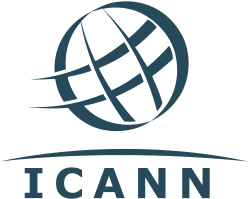What is a domain registrar?
A domain registrar is a business that is responsible for registering and managing domain names, where it bears the responsibility of facilitating the process to ensure successful domain registrations by users. A domain registrar helps a user purchase and manage his/her domain name.
In case you do not know what a domain name is, read our article about domain name here.
A domain name is crucial when building a website, and you cannot have a website without getting a domain name for it. To get a domain name, one has to register it online, and the process here is where a domain registrar plays a role.

What are the responsibilities of a domain registrar?
A domain registrar is responsible for offering domain name registration services to registrants. With this in mind, it performs a few important customer service-related tasks, according to the requirements set by ICANN. ICANN stands for the Internet Corporation for Assigned Names and Numbers. It is in charge of coordinating the Internet address book and the unique identifiers of all websites worldwide, enabling one global Internet. That is why it is crucial to work with an ICANN-accredited registrar.
Partner with WebNIC, an ICANN-accredited registrar, to start a domain name reseller business!

In such a situation, there exists a relationship between ICANN and an ICANN-accredited domain registrar, held in place by the Registrar Accreditation Agreements (RAA), which sets out the obligations of both parties. Under RAA, a domain registrar is obliged with the following responsibilities:
1. A domain registrar must adhere to numerous ICANN consensus policies. Some example policies include Inter-Registrar Transfer Policy, Uniform Domain Name Dispute Resolution Policy, WHOIS Data Reminder Policy, WHOIS Marketing Restriction Policy, Restored Names Accuracy Policy, Expired Domain Deletion Policy, to name a few. The aim of doing so is that ICANN wants to ensure a high standard of domain name registration service level for all registrants.
2. A domain registrar must update and populate WHOIS data in a timely manner to ensure the accuracy of the data. WHOIS is a database of information that allows users to look up domain and IP owner information and check out dozens of other statistics about the domain name.
3. A domain registrar must submit and update the most recent registration information to registries. A registry is an organisation responsible for monitoring certain top-level domains and their corresponding registration information, which a domain registrar submits.
4. A domain registrar must provide users with public access to WHOIS data, where they can search for the information associated with a domain name. It is important to have a certain degree of transparency and access to owner info, in case there are any issues with a domain name.
5. A domain registrar must require all Registered Name Holders (domain name registrants) to enter into a registration agreement that includes specific provisions. The agreement outlines the laws and regulations related to the domain name, which provides a high level of transparency in dealing with domain name issues.
6. A domain registrar must investigate reported inaccurate contact information. The contact info of a domain name registrant is usually available through WHOIS data, and anyone can reach out and contact them to handle domain name issues. It is possible for the presence of inaccurate contact information in WHOIS, and if reported by users, a domain registrar must do due diligence in investigating it.
In summary, there are many responsibilities for a domain registrar, and the most crucial part is to handle all domain name transactions initiated by a user, namely registration, transfer and renewal. The domain registrar plays an important role in updating registries whenever there is a new domain name purchase by a customer. It is required to maintain a database of accurate information to ensure the Internet works smoothly.

Domain Registrar Compliance Program
Other than the responsibilities stated above, there is also a Registrar Compliance Program outlined by ICANN, and it must be complied with by a domain registrar. Under this program, the lists of domain registrar compliance areas are outlined below:
1. WHOIS management
A domain registrar is required to comply with the provision of free public WHOIS service on Port 43 and via the web. It must also submit all required data elements to the registries and update data in a timely manner. It is also required of a domain registrar to take the necessary steps to investigate and correct inaccuracies upon notification. Besides, a domain registrar also needs to provide annual WHOIS data reminders to registrants.
2. Domain name transfer
Every ICANN-accredited domain registrar must allow domain name registrants to transfer their domain names to another registrar. Any registrants can submit any complaints regarding the transfer process of a domain registrar, and ICANN will take the appropriate steps to review and follow up with the domain registrar in question.
3. Domain name renewal
Every ICANN-accredited domain registrar needs to abide by policies regarding domain name expiration and the renewal process. The compliance includes specific communication standards to notify registrants of domain name expiration, as well as the standard of the renewal process.
4. Data escrow compliance
A domain registrar is also required to submit an electronic copy of its database to an escrow agent in accordance with an agreed schedule and format. The process is done by having the domain registrar enter an agreement with ICANN and the escrow agent. From there on, the domain registrar needs to submit data accordingly on schedule, in the proper format and which complies with the requirements stated in RAA.
Such a process aims to safeguard the registrants, in case of any forms of failure from the domain registrar. A data escrow agent is a neutral third-party which stores the data and restores said data when the circumstances arise.
5. Uniform Domain Name Dispute Resolution Policy (UDRP) compliance
The UDRP is a method to resolve certain domain name disputes regarding trademarks. When an independent dispute resolution provider files a dispute, ICANN requires that a domain registrar complies with the UDRP. The compliance areas include specific procedures, such as verifying registrant information, maintaining domain status quo, locking domain names, and timely implementation of UDRP decisions.
In conclusion, there are many responsibilities and compliance that is required in becoming a domain registrar. Besides, the process to qualify as a domain registrar is daunting and incredibly challenging, which is why not many businesses are willing to commit and invest in becoming one. However, there is still the alternative of joining us as our reseller, in which you can still involve yourself in the domain industry. We offer many benefits to become our reseller, check them out here!
About WebNIC
WebNIC is an accredited registrar by ICANN and various countries, including Asia, Europe, America, Australasia, and Africa. With offices in Singapore, Kuala Lumpur, Beijing, Taipei and Jakarta, we serve 5,000+ active resellers in over 70 countries. To join us and become a reseller, live chat with us or email us at inquiry@webnic.cc.

